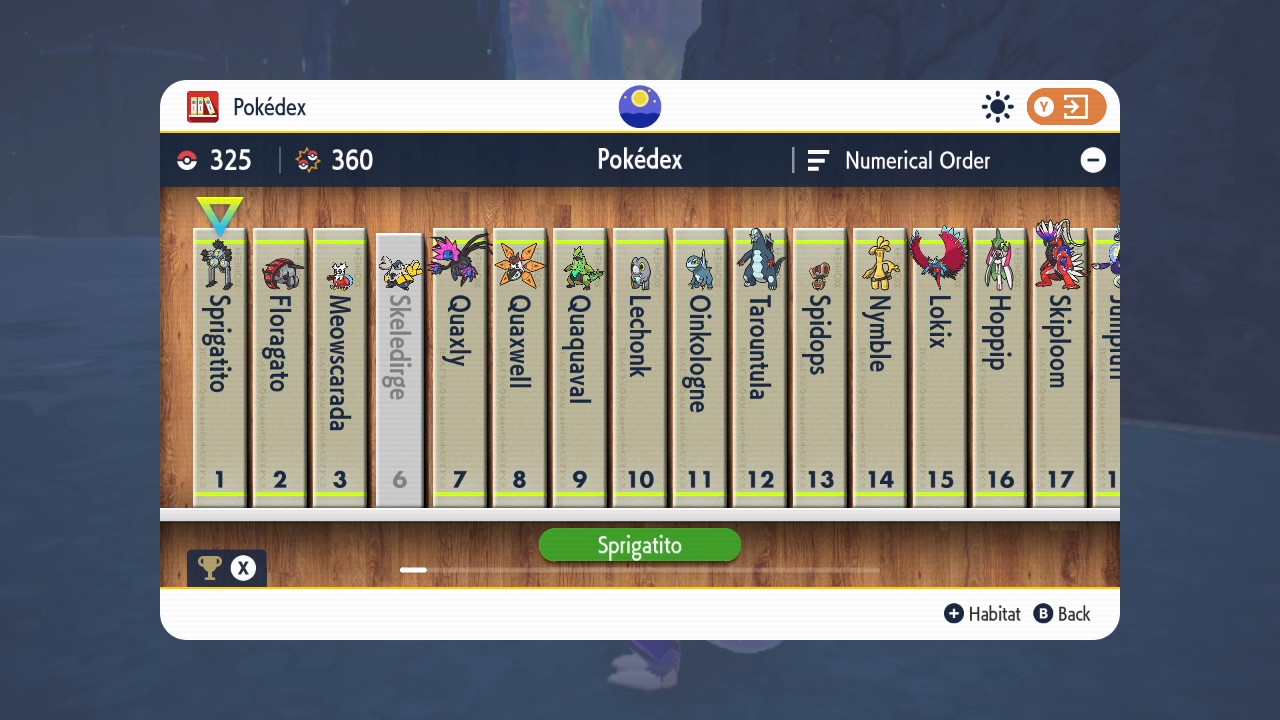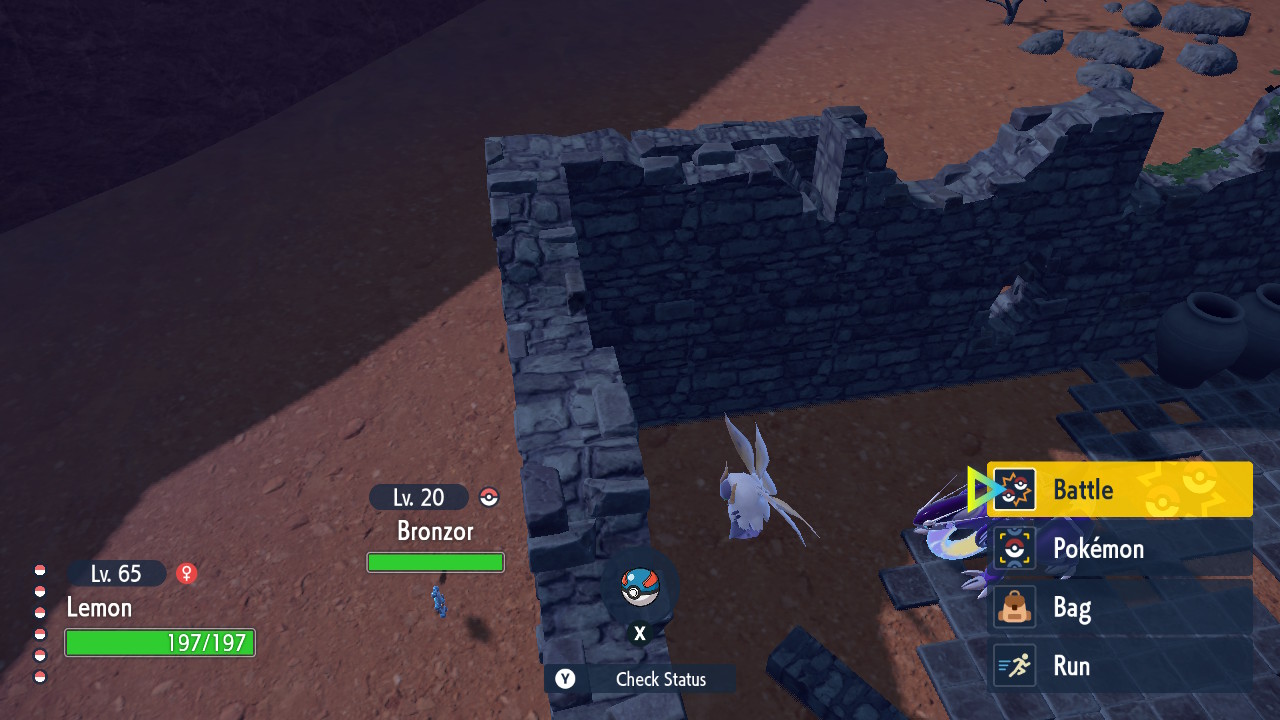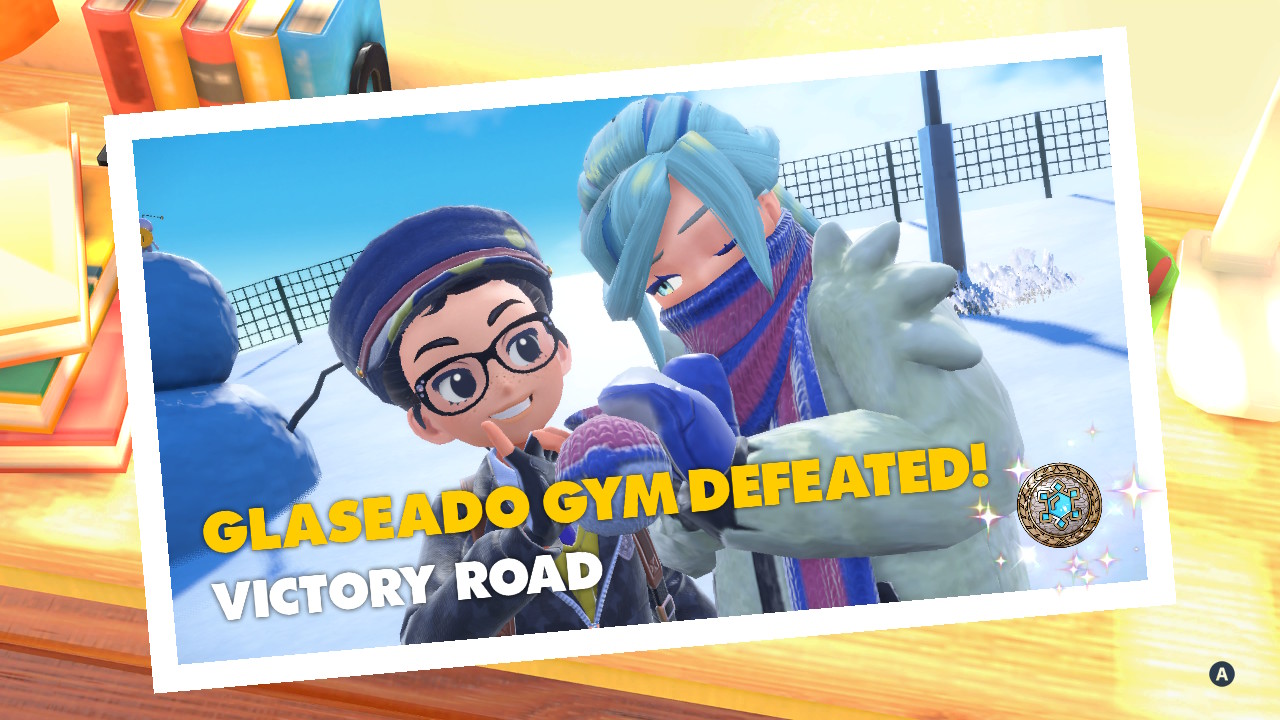Trainers young and old have their eyes set on Pokémon Scarlet & Violet, as they promise to usher in a new future for the Pokémon series. To move away from the linear progression of the past is their real test; to produce the most seamless, ideal form of a Pokémon journey is their cause. The region of Paldea, brimming with wild Pokémon and mysteries alike, is the stage upon which players hope to maintain full control of their adventures. Unfortunately, what should be a steady experience is marred by not only a troublesome lack of polish and plethora of bugs, but also some questionable design decisions that actively halt the seamlessness of the open-world experience.
To give some sense of direction to their open world, Scarlet & Violet offer three “storylines” for players to tackle: defeating the Titan Pokémon and obtaining the Herba Mystica in “Path of Legends,” dismantling Team Star in “Starfall Street,” and challenging the Gym Leaders in an attempt to earn the Champion title in “Victory Road.” Defeating each storyline’s equivalent of a boss rewards players with a badge, obtainable in any order the player chooses. As past Pokémon titles intertwined their generally separate storylines of earning the Gym Badges and defeating the region’s gang of organized crime, allies and villains alike ran the risk of—and almost always succumbed to—being underinvolved and forgettable or overinvolved and irritating. Scarlet & Violet’s separation of its storylines alleviates this issue by having each of the three main characters only appear in their respective stories: Arven in Path of Legends, Penny in Starfall Street, and Nemona in Victory Road. By forcing characters into their limited narrative space, the games keep a steady pace that always balances story and gameplay fairly, and the motivation to push the story forward becomes as intrinsic as the desire to explore the open setting of Paldea for its gameplay.
The gameplay utilized in the three storylines corresponds to the ways Trainers can battle in the games. While the Gym Leader fights of Victory Road are the standard turn-based affairs of the series, the Titan Pokémon of Path of Legends take on a format similar to Tera Raids players can participate in throughout the region. And while the Team Star bosses use a standard battle format, players must reach them by sending out their Pokémon into the overworld using the Let’s Go feature to clear out 30 of the Team Star Grunts’ lackey Pokémon. The Let’s Go feature is also available outside of Team Star’s bases to clear out nearby Pokémon without engaging them in battle. The feature has its benefits when trying to move smoothly across Paldea: it reduces experience gained but does not use Power Points, and defeated Pokémon still drop materials to craft TMs. But it’s also here where Scarlet & Violet’s attempts at seamlessness start to unravel.

Paldea is an absolutely massive region, making use of Scarlet & Violet’s Koraidon or Miraidon motorcycle companion a must; however, Let’s Go Pokémon don’t follow along fast enough to keep up, especially when they’re left behind to clear out a group of wild Pokémon, and end up recalled into their Poké Ball after a certain distance. Players must come to a halt and watch as their Let’s Go Pokémon autobattles enemies even though such a feature should allow them to keep moving forward. Let’s Go Pokémon also take a surprising amount of time to clear a single autobattle since they have to undergo an attacking animation each time. While sending out multiple Let’s Go Pokémon at once would remedy this, as demonstrated in the Team Star bases, players are bafflingly limited to a single Let’s Go Pokémon at a time while traveling across Paldea.
Let’s Go Pokémon are also, unsurprisingly, limited in terms of reach. For example, small, landlocked Pokémon cannot autobattle against Pokémon suspended in midair, and not all Pokémon can swim. Type advantage also plays a role in how much or how little HP a Let’s Go Pokémon loses during an autobattle and their willingness to autobattle at all; however, the process of swapping the party’s leading Pokémon in Let’s Go is not seamless. While Pokémon Legends: Arceus had a great solution for this with the L and R buttons scrolling between party members, Scarlet & Violet require players to open the pause menu whenever moving party members. While this grinds players to a halt, it doesn’t stop Pokémon moving on the overworld. The Pokémon players want to target may make their escape while players are shuffling their party around or accessing their boxes—with each individual box taking up to a jaw-dropping five seconds to load. Or another wild Pokémon entirely may charge them and potentially engage them in an encounter after exiting the menu.
Wild encounter “chains” are an unintended factor too frequent for comfort. Players can’t move around during battle, but the wild Pokémon surrounding them can. Particularly aggressive—and unamusingly common—Pokémon such as Lokix and Golduck may clip into Trainers while they’re in one battle and thus initiate another battle immediately after the first one. This is especially egregious in later stages of the games where these Pokémon are not only common in number but high in level, so neither running nor defeating them are quick and easy options. Speaking to an NPC isn’t entirely safe either, as wild Pokémon may come to clip within the player and not move until they leave the dialogue, forcing an encounter with a Pokémon they likely don’t want to fight in the first place.

When a player does want to single out a particular Pokémon to battle, they can use the ZL button to target them before tossing their Pokémon out—or they can at least try to. The poor targeting system is another feature that slows Scarlet & Violet to a crawl. In practice, targeting is distressingly inconsistent. It’s a toss-up as to whether a Pokémon targets successfully or not, even when said Pokémon is directly in front of the player—at which point it’s simply more convenient to just run into them and start a battle. When there’s one Pokémon among a group that players wish to target to avoid the smaller Pokémon around them, it’s another toss-up whether they target correctly when using the right stick to try to change targets. And, of course, other wild Pokémon take any opportunity to dogpile the player, so they’re likely to be forced into an encounter with a different wild Pokémon entirely while trying to target.
Targeting also falters when sending out a Let’s Go Pokémon; if the wild Pokémon is targeted already, the Let’s Go Pokémon will fight it—if it can—but sending out a Let’s Go Pokémon while directly facing a wild one doesn’t guarantee they’re the target. It’s all too common for a Let’s Go Pokémon to rush out of its Poké Ball and race directly by a wild Pokémon without considering it for autobattle. This frequently results in a button-mashing marathon, hoping the Let’s Go Pokémon will actually autobattle the wild Pokémon in front of it. This creates conflict when considering that elusive Shiny Pokémon don’t have any visual or audio indicator on the overworld like they did in Legends: Arceus.
Let’s Go Pokémon won’t battle Shiny Pokémon, but they also won’t fight any Pokémon that are too high up in the air compared to them, or too high leveled, or they walk right by wild Pokémon on a whim. Even though wild special Tera Type Pokémon have a glow visible from miles away and a shimmering sound effect when nearby—a sound effect that frequently remains after the Pokémon itself has despawned—Shiny Pokémon aren’t given any sort of indicator whatsoever. This can slow gameplay down for Shiny collectors that don’t want to risk skipping any and isn’t helped by Scarlet & Violet’s harsh shadows making Pokémon look like they’re drastically different colors when they’re not Shiny at all. A similar problem occurs thanks to Pokémon sizes: the tall grass of Paldea is just high enough to hide small Pokémon from view, making it easy to start encounters accidentally or to pass by them without noticing that they’re there. But the grass isn’t tall enough to obstruct the player from view, so the crouching feature—meant for hiding or sneaking up on wild Pokémon—is usually not very effective.

As players wade through Paldea in spite of these challenges, they’ll find that, naturally, moving either clockwise or counterclockwise is the most intuitive way to progress. The crater spanning the region’s center literally prevents zig-zagging from west to east and back without actively choosing to utilize the fast travel system. But Scarlet & Violet are actually designed to be played in this unintuitive manner: the storyline bosses’ Pokémon levels do not scale with each earned badge, but their set level progression is such that it involves leaping across Paldea from one side to the other. Players who move naturally from one location to the next will find drastic level leaps followed by substantial level drops. The worst example of this is how the Ghost-type Gym Leader and Ice-type Gym Leader are not even a hop, skip, and jump apart from each other, but level-wise, the Psychic-type Gym Leader is meant to be challenged between the two—yet the Psychic-type Gym Leader is hundreds of miles away on the other end of the map.
Zooming the region map all the way out shows that the games keep track of the order in which players earn their badges from each storyline—a charming look back at the player’s one-of-a-kind journey. The intention is clearly that Scarlet & Violet are non-linear, with players approaching the story in any order they choose. However, the lack of bosses level scaling detracts from this goal in such a blatant way that it’s frankly shocking. And while such a matter can be easy to forget once the journey comes to a close and the credits roll, these very storylines are crucial to Scarlet & Violet’s experience. Once the main story is complete, players are left to roam around Paldea with its blatant bugs and technical hiccups, such as Pokémon spawning inside walls and cave ceilings, online Tera Raid Pokémon displaying their HP bar depleted only to remain standing, Pokémon that pop in right beside the player, and a dragon-motorcycle who still sometimes struggles to latch onto cliffs even after learning how to climb them. Without the strengths of the storylines holding it together, Scarlet & Violet‘s world starts to unravel—but the approach to those supposedly non-linear storylines isn’t without its faults.
Scarlet & Violet’s approach to the world of Pokémon is the freshest the series has ever seen. In concept, it expands on Legends: Arceus’s successful semi-open world and applies it to the more traditional facets players expect from a Pokémon game—namely, a Pokémon League with Gyms and an evil team to thwart. And it does so with such success that it’s the most original the series has felt even with Legends: Arceus’s release earlier the same year. But out of the corner of the player’s eye—what was that? A graphical twitch as large spans of the environment flicker in and out of existence. Over there—is that Pokémon Shiny? Turns out it was just a trick of the light. And is that a… floating Poké Ball? No, just a Trainer whose model hasn’t loaded in yet, although the Poké Ball she holds already has. In spite of all its strengths, Pokémon Scarlet & Violet keeps stopping the player and has them always peeking back over their shoulder even when they should be looking forward. Even without the bugs—which, much like Paldea’s wild Lokix, can’t be avoided anyways—certain design choices actively undermine the games’ end goal of an open-world experience. What should be the most unique mainline series titles are also paradoxically more of the same: it’s a great experience despite its flaws, but so are most Pokémon games.



